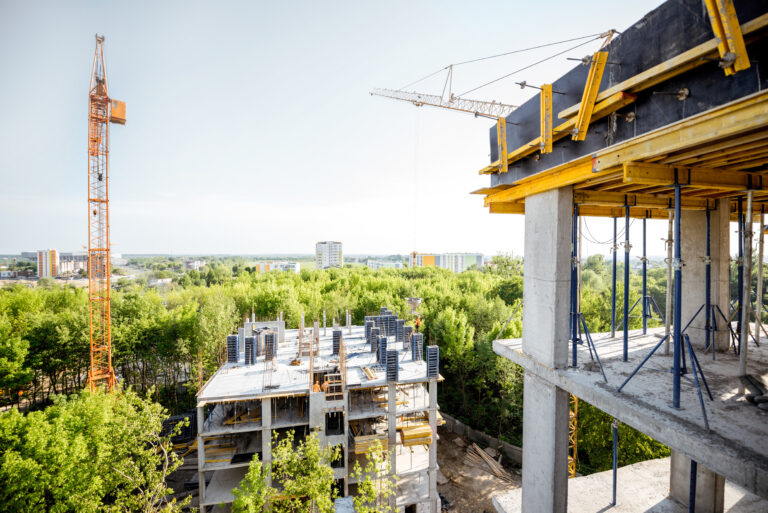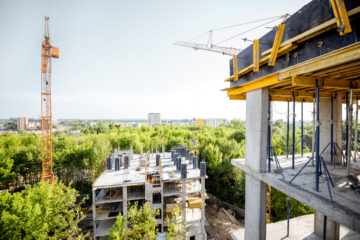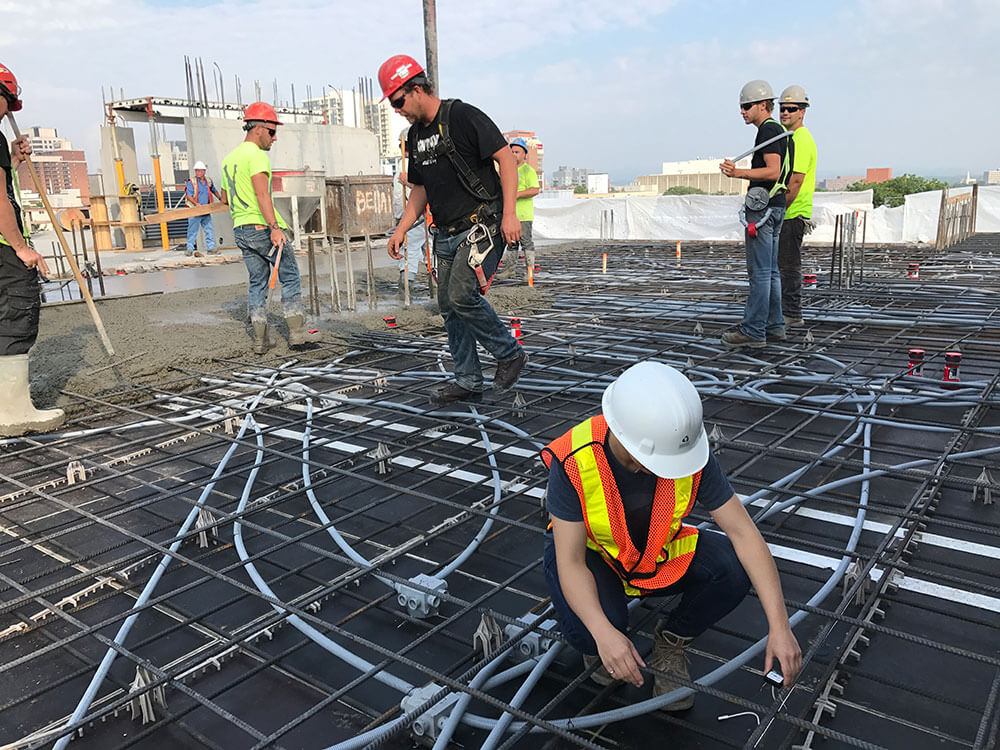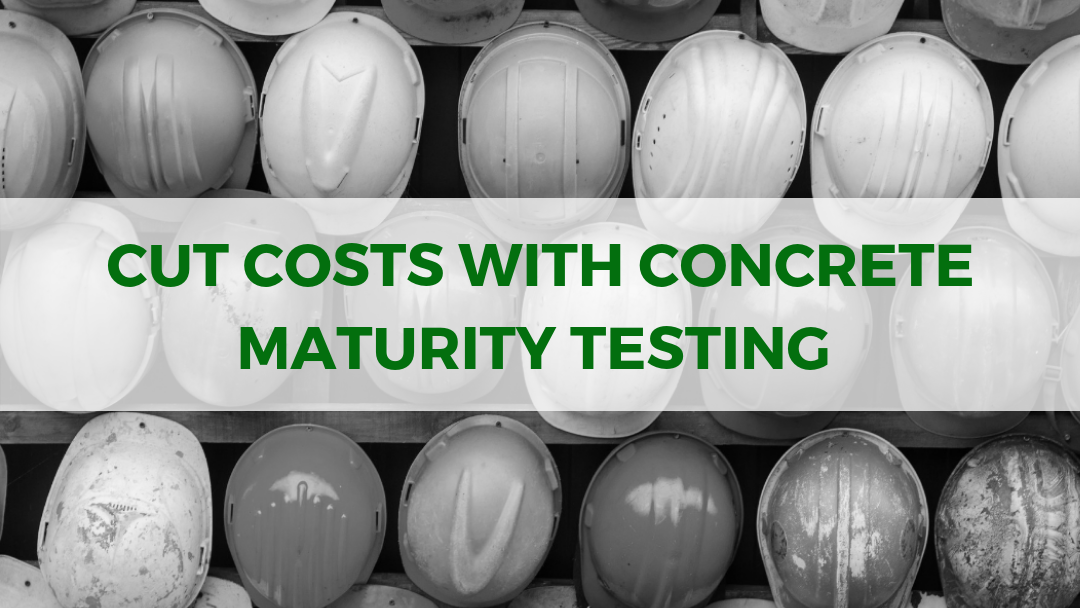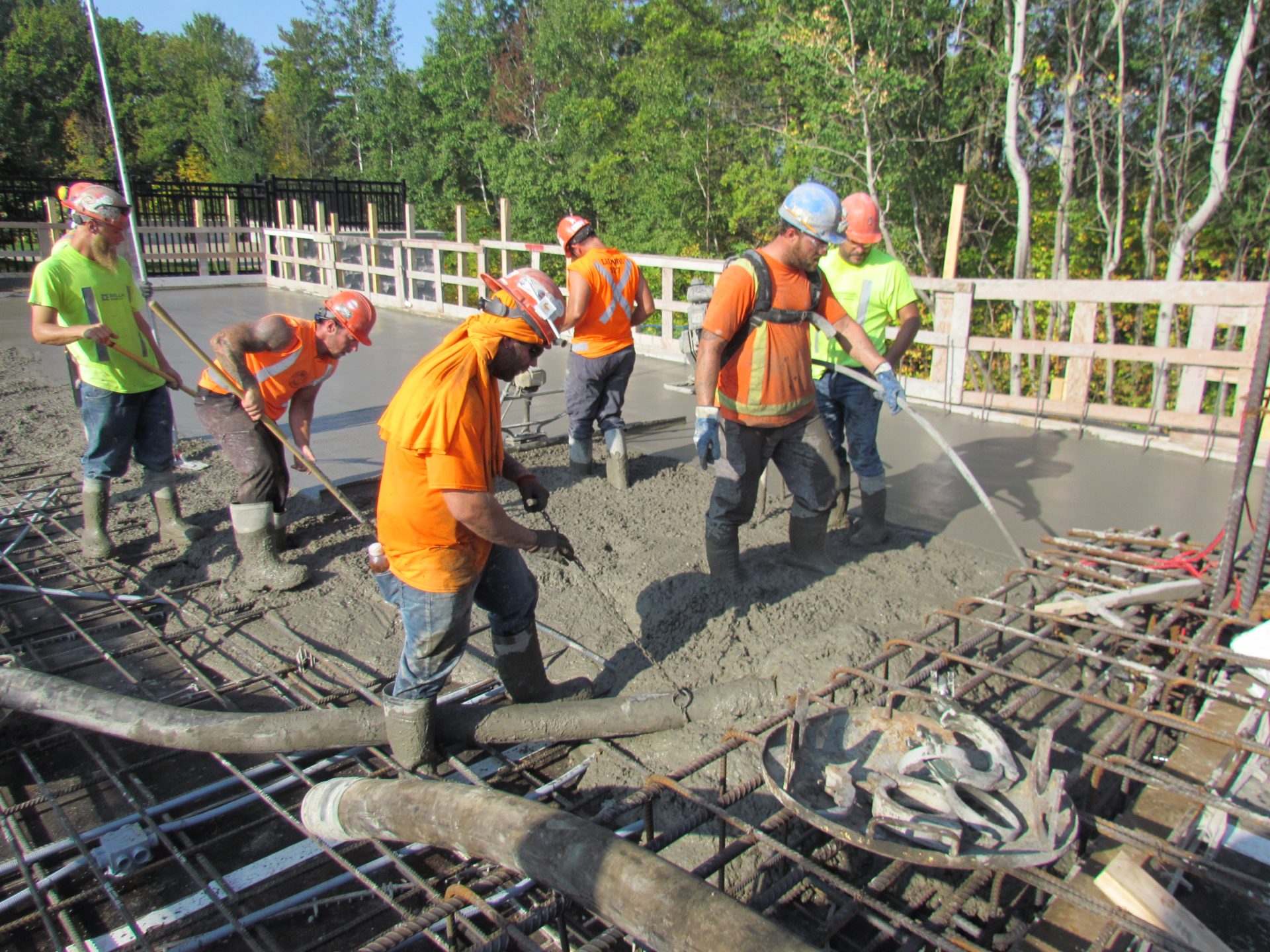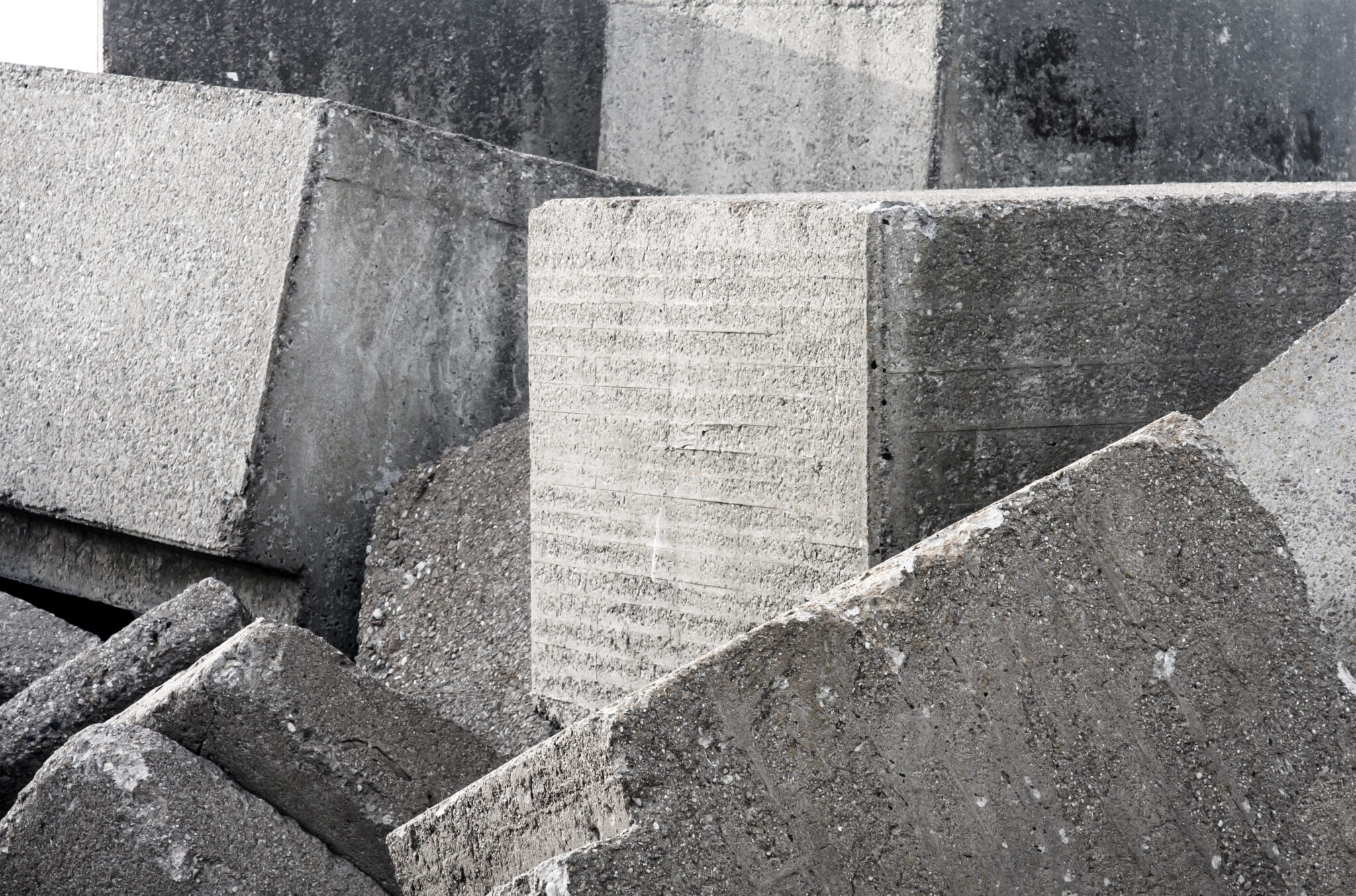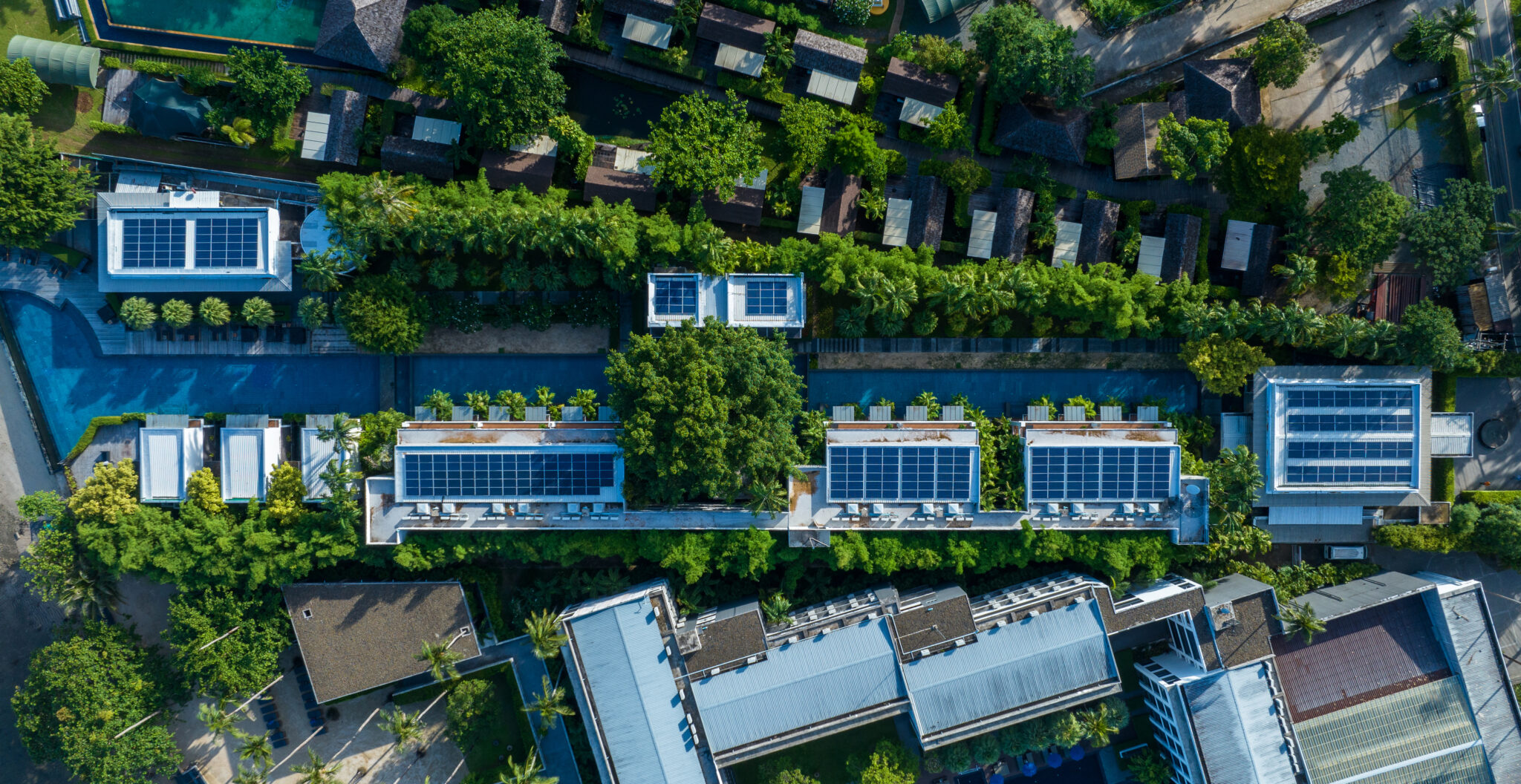Smart construction is reshaping how we build by combining AI, the Internet of Things (IoT), and data analytics across every project phase. As a result, it has become a strategic performance driver, helping firms complete projects faster, lower costs, and enhance safety while achieving sustainability goals.
SmartRock® Long Range Savings for Big Projects
In this blog, let’s explore how AI-driven scheduling, real-time IoT monitoring, and data platforms are delivering double-digit productivity gains, while also cutting rework, and enabling smarter decision-making. Learn about real-world case studies, governance strategies, ROI metrics, and steps to pilot, scale, and sustain smart construction initiatives.
AI, IoT, and Analytics: Boosting Productivity and Mitigating Risk
Smart construction technologies are tackling the industry’s biggest challenges: low productivity, high risk, and operational fragmentation.
By integrating artificial intelligence (AI), IoT sensors, and data analytics, companies are automating workflows, improving decision-making, and uncovering efficiency gains once impossible to see. The impact is measurable, driving faster delivery, safer sites, and higher profitability.
Productivity Gains
- Digital tools connect bidding, scheduling, and maintenance systems, breaking down data silos.
- AI scheduling can analyze weather, crew performance, historical data, potentially reduce delays, and cut costs by up to 15%.
- Example: Bituminous Roadways linked workflows via Trimble software, boosting labor productivity by 150% and equipment utilization by 117%.
Reduced Rework and Errors
- Rework accounts for 2-20% of project value annually.
- BIM and prefabrication improve accuracy and coordination, cutting waste and boosting margins.
- Example: Wayne Brothers used 3D models for rebar fabrication, achieving 99% accuracy, nearly eliminating typical 10-15% waste.
Enhanced Safety and Risk Management
- Computer vision AI and wearable sensors monitor safety in real time, alerting teams to risks immediately.
- Predictive analytics (e.g., Autodesk Construction IQ) forecast potential incidents, enabling proactive interventions.
These tools contribute to long-term reductions in fatality rates and incident-related costs.
Innovation and Continuous Improvement
Smart construction fosters a data-driven culture:
- IoT sensor data helps identify trends, replicate best practices, and optimize operations.
- Generative design tools test hundreds of configurations for optimal design.
- Digital twins simulate improvements before implementation, turning each project into a learning engine
Smart Construction in Action: Real-World Case Studies
Across North America, contractors using connected technologies, AI, and IoT tools are seeing measurable returns that directly boost productivity and profit.
Bituminous Roadways, USA
After digitizing and linking workflows, from bidding to IoT-equipped trucks, Bituminous Roadways won Trimble’s Connected Construction award. Using real-time scheduling, they can now dispatch 200 trucks daily, up from 80, achieving 150% higher labor output and 117% greater equipment utilization. These improvements translate into more projects delivered on time with the same resources.
R.B. Jergens Contractors, USA
This heavy civil firm added GPS machine control across more than 50 pieces of equipment, minimizing over-digging and material waste. The upgrade increased productivity by 50-100% and cut fuel and labor costs while improving schedule reliability.
Modern Concrete & Materials, USA
Adopting Giatec SmartMix™ AI platform allowed this ready-mix producer to consolidate mix data and optimize material use. Within one year, they achieved a 300% ROI and forecasted six-figure annual savings, all while improving mix consistency and reducing cement content for lower emissions.
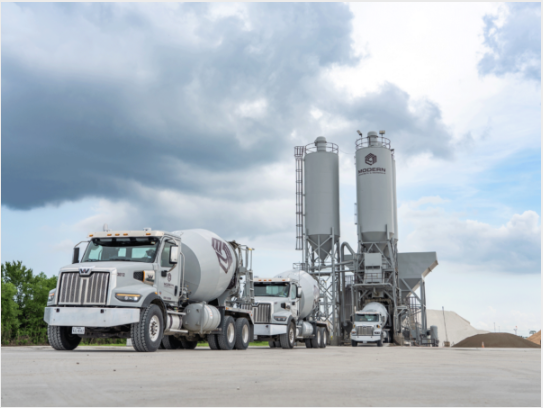
M.J. Erickson & Wayne Brothers, USA
Using machine-guided grading, contractor M.J. Erickson experienced operators were 41% faster and 75% more accurate, while new operators doubled accuracy and improved speed by 28%. Similarly, Wayne Brothers also reached 99% rebar fabrication accuracy, virtually eliminating the normal 10-15% material waste.
Together, these cases prove that technology adoption delivers quantifiable gains, from reduced waste to stronger margins. By improving labor efficiency, minimizing rework, and preventing costly incidents, smart construction empowers firms to deliver projects faster, safer, and more profitably.
Building a Business-Aligned Technology Stack
Realizing the full potential of smart construction begins with building a business-aligned technology stack, an integrated mix of software, hardware, and connectivity tools tailored to your company’s goals. There’s no one-size-fits-all solution; success depends on aligning technology choices with your workflows, project types, and strategic objectives.
| Technology Category | Function / Benefits | Examples |
| Project Management & Collaboration | Centralizing schedules, RFIs, documents, and communication. Reduces miscommunication and costly delays. | Procore, Autodesk Construction Cloud, Buildertrend, Trimble ProjectSight |
| Building Information Modeling (BIM) | 3D/4D modeling for design optimization and clash detection. Supports prefabrication and a single source of truth for project geometry and specifications. | Autodesk Revit, Trimble Tekla, Bentley OpenBuildings |
| IoT Sensors & Jobsite Monitoring | Real-time visibility into concrete curing, equipment use, environmental conditions, and worker safety. Prevents downtime and improves compliance. | Giatec 360™ with SmartRock®, Triax Spot-r, Trimble Field Sense. |
| Scheduling & AI Planning Tools | Using AI and predictive analytics to optimize schedules, resource allocation, and sequencing. Prevents bottlenecks and improves on-time delivery. | Oracle Primavera, Autodesk Construction IQ, ALICE Technologies |
| Field Mobility & Productivity Apps | Replacing paper workflows. Crews can log progress, inspections, and photos from mobile devices. AI enhances documentation speed. | PlanGrid, Bluebeam, Rhumbix, Buildertrend App |
| Equipment & Fleet Management | Monitoring machinery health reduces idle time, schedules maintenance efficiently. Boosts equipment utilization and productivity. | Trimble WorksOS, Caterpillar VisionLink, Teletrac Navman, Deere WorkSight |
| Analytics & Dashboarding | Consolidating BIM, IoT, schedule, and cost data into visual dashboards for real-time decision-making. Tracks KPIs like safety incidents and schedule performance. | Power BI, Tableau, Autodesk Insight, Oracle Analytics for Construction |
| Digital Twins & Asset Management | Creating live, dynamic replicas of projects for scenario simulation, predictive maintenance, and energy optimization. | Bentley iTwin, IBM Maximo, Willow, Cityzenith |
| Prefabrication & Modular Construction | Linking BIM to fabrication workflows for off-site assembly. Reduces waste and labor, shortens schedules, and increases quality control. | Autodesk Assemble, Factory_OS, ZenTek |
| Robotics & Automated Equipment | Automating repetitive or hazardous tasks (surveying, rebar tying, drywall finishing). Improves accuracy and safety on site. | Boston Dynamics Spot, HP SitePrint, TyBot, Dusty Robotics, Canvas |
A smart construction tech stack connects design to field operations through seamless data integration, eliminating silos and outdated information. When selecting tools, prioritize ease of use, scalability, and integration, and pilot platforms to ensure adoption. Sometimes a simpler, widely embraced tool outperforms a complex system.
Decision-Making Checklist
Selecting and implementing construction technology is a major strategic investment. To ensure each tool aligns with your business objectives and delivers measurable ROI, use this checklist as a practical roadmap for successful adoption.
Define Clear Goals and Pain Points
- Identify the exact challenges you aim to solve, reduce delays, cut rework, improve communication, or track carbon data.
- Focus on technology that delivers measurable outcomes. For instance, frequent schedule slips call for AI scheduling tools or predictive project management platforms.
Ensure Leadership and Team Buy-In
- Adoption succeeds when both leadership and field teams are committed. Engage leadership and field teams early.
- Assign executive sponsors and field tech champions.
- Reinforce adoption through consistent use of digital dashboards over spreadsheets.
Start with a Pilot Project
- Avoid full-scale rollout immediately.
- Select a controlled pilot project or department.
- Set KPIs and success criteria (e.g., reduce RFIs by 50%).
- Document lessons to support broader adoption.
Plan a Phased Rollout
Break implementation into manageable stages.
- Train project managers in scheduling tools.
- Introduce mobile reporting for field supervisors.
- Integrate analytics and IoT data dashboards.
This approach prevents overload, allows for quick wins, and maintains momentum. Teams seeing faster issue resolution after early phases gain confidence in the process.
Invest in Role-Specific Training
- Customize learning tracks for each role: tablets for field staff, data interpretation for executives.
- Use a mix of workshops, videos, and digital guides to make training continuous and practical.
Align with Existing Processes (or Refine Them)
- Technology should enhance, not disrupt your workflows. Integrate technology into current workflows or improve inefficient ones.
- Standardize digital processes, such as BIM coordination reviews and digital safety logs.
Develop a Data and Integration Strategy
- Ensure systems connect via APIs or middleware with accounting, procurement, and analytics platforms.
- Connected tools eliminate double entry and reveal inefficiencies early.
Prioritize Cybersecurity and Data Governance
- Include your IT team in evaluating every platform’s security protocol, from encryption to access controls.
- Retain data ownership, define user permissions, and plan for backups and continuity.
Want to keep your jobsite safe from cyberattacks? Read our blog on construction cybersecurity and act before it’s too late!
Measure KPIs and ROI Continuously
Establish clear KPIs before rollout and track them consistently.
- Operational Metrics: Task completion rates, reduction in RFIs, labor hours saved.
- Safety Metrics: Fewer incidents and faster corrective actions.
- Adoption Metrics: Daily user logins, number of projects using the platform.
Calculate tangible gains like reduced overtime, less paperwork, and higher bid success.
Iterate and Scale
- Expand adoption after successful pilots.
- Gather feedback, refine processes, and leverage vendor updates.
- Upgrade infrastructure (Wi-Fi, 5G, tablets) to support broader use.
A well-planned strategy ensures technology becomes a true enabler. The difference between firms achieving “massive efficiency gains” and those struggling often lies not in the tools themselves, but in how they’re implemented. With the right planning, training, and continuous measurement, smart construction becomes a driver of long-term productivity and ROI.
SmartRock® Long Range Savings for Big Projects
Roadmap for Adoption
Smart construction adoption is a progressive journey that transforms how projects are planned, executed, and managed. The process starts small, with focused pilot initiatives, and scales into full enterprise integration when managed strategically. The roadmap below outlines three key phases, along with governance strategies and KPIs to track measurable progress.
Phase 1: Pilot and Learn
Begin your smart construction journey with a focused pilot project, large enough to yield valuable data, yet not mission-critical if challenges arise.
- Focus on a mid-sized project with a tech-friendly team.
- Establish baseline metrics: schedule, rework, curing times.
- Assign a Pilot Manager and document feedback.
- KPIs: user adoption, measurable performance gains, crew satisfaction.
Governance Tip: Treat the pilot as an experiment: hold review meetings, troubleshoot quickly, and adjust tools as needed. Meanwhile, begin developing a digital playbook that records configurations, workflows, and lessons learned to guide broader rollout across future projects.
Phase 2: Refine and Expand
Once the pilot phase delivers measurable results, focus on refinement and expansion.
- Apply lessons learned from the pilot to additional projects.
- Develop “power users” to mentor other teams.
- Embed new workflows: BIM coordination, digital safety logs.
- KPIs: adoption breadth, efficiency metrics (e.g., RFIs per $1M reduced by 30%), ROI tracking, training effectiveness.
Phase 3: Enterprise Integration
At this stage, smart construction becomes part of your company’s DNA: fully scaled, standardized, and aligned with business goals.
- Integrate your tech goals into the overall business plan. Appoint a tech leader (like a CTO) and form a Digital Committee to guide adoption and ROI.
- Standardize data workflows, build centralized repositories, and ensure privacy and interoperability across all tools.
- Use data insights to refine processes, strengthen trust in technology, and drive continuous improvement.
- KPIs: Measure success through better on-time delivery, lower cost overruns, fewer incidents, stronger margins, and happier teams and clients.
Why This Roadmap Works
Following this roadmap ensures that your organization doesn’t just “adopt tools” but transforms how it builds. Each phase builds confidence, accountability, and data maturity.
- Pilots prove feasibility; scaling ensures consistency.
- Enterprise integration unlocks efficiency, safety, and profitability gains.
- Firms following this structured approach outperform peers with faster, safer, and more cost-effective projects.
- Continuous improvement turns smart construction tools into a strategic advantage for sustainable growth.
Sustainability and Smart Construction: Building Green and Lean
Sustainable construction is both a business priority and a global responsibility. As the demand for greener infrastructure grows, smart construction technologies are helping companies reduce waste, optimize energy use, and minimize environmental impact. At the same time, they improve project efficiency, cutting costs, and supporting long-term, sustainable growth.
The Carbon Footprint Context
The construction sector, including building operations, accounts for nearly 40% of global carbon emissions. Beyond materials like cement and steel, much of this footprint comes from inefficient processes, waste, rework, and idle machinery. The World Green Building Council notes that reducing waste through smarter, more efficient construction is one of the fastest paths to lower emissions.
Reducing Material Waste
Smart construction tackles waste at its source. By using BIM and digital takeoffs, contractors can order precise material quantities, avoiding the over-ordering that leads to piles of unused stock. For instance, Wayne Brothers, used 3D constructible models to plan rebar and concrete, eliminating the usual 10-15% surplus and cutting embodied carbon. Preventing rework through AI-driven clash detection and quality control also reduces emissions by avoiding demolish-and-repour scenarios.
Efficient Machinery and Energy Use
IoT and AI optimize equipment performance and site energy consumption. For example, one heavy civil firm saved four hours of runtime daily by using IoT sensors to optimize excavation and truck loading. Predictive maintenance keeps machines fuel-efficient, while AI scheduling can shorten project durations by 15%, cutting generator use and energy demand, and fewer days onsite mean fewer emissions overall.
Smart Site Monitoring and Energy Use
IoT sensors now allow real-time control of energy consumption on construction sites. Smart lighting systems activate only when motion is detected, preventing tower lights from running all night. Additionally, sensors can also detect idling machinery, automatically alerting staff or shutting down equipment to save fuel. Some advanced projects use IoT-enabled microgrids to manage power efficiently, ensuring diesel generators run only when required and at optimal loads. Though individually small, these adjustments collectively deliver significant emissions reductions across a project’s lifecycle.
Innovations in Materials and Design
Smart construction also drives low-carbon material innovation. AI and data analytics are being used to create greener concrete mixes by incorporating fly ash, slag, and other cement substitutes. For example, Giatec SmartMix applies AI to optimize performance and cost, enabling cement reductions that directly cut CO₂ emissions. Each ton of cement saved prevents about a ton of CO₂. Furthermore, BIM and generative design further reduce material use. AI-driven modeling can cut concrete or steel needs by up to 20%, saving resources and emissions.
Discover how Tomlinson achieved a 5% cost reduction and 8.8% cement savings using SmartMix. Read the full case study!
Prefab and Modular Construction
Off-site fabrication, powered by BIM and digital logistics, minimizes waste through precise cutting and better recycling. Modular builds reduce transport emissions and onsite generator use since assembly is faster.
Monitoring Carbon and Compliance
With sustainability now a core performance metric, smart construction platforms are integrating carbon tracking dashboards that measure both embodied carbon (from materials) and operational emissions (from equipment). This real-time visibility allows project leaders to monitor their carbon footprint and meet client or regulatory targets.
Use Case – Sustainable Outcomes
The Dubai Metro Red Line Extension illustrates the impact of digitalization. Using BIM and integrated project delivery, teams coordinated seamlessly across stakeholders, completing the project ahead of schedule and meeting stringent sustainability benchmarks. Digital planning reduced rework, optimized resource use, and enabled sustainable design integration from day one.
Regulatory Momentum
Governments are now mandating and rewarding low-carbon construction. For example, the U.S.EPA provides grants for emission-reducing technologies like cleaner equipment and telemetry systems. Firms using IoT and analytics can easily verify compliance, giving them a competitive advantage as embodied carbon limits enter new building codes.
Energy Efficiency in Operation
Smart construction lays the groundwork for sustainable building performance long after completion. Through digital twins and AI-driven commissioning, contractors can ensure buildings perform as designed, optimizing HVAC, lighting, and occupancy for minimal energy use. Delivering a data-enabled digital twin adds long-term value for owners, turning each project into a sustainable, intelligent asset.
By cutting waste, optimizing energy, and enabling greener materials, it aligns firms with global climate goals while improving profitability.
Conclusion
Smart construction is a present-day reality transforming how projects are delivered worldwide. For decision-makers across construction, infrastructure, and real estate, the takeaway is clear: adopting digital, data-driven methods is essential for competitiveness, profitability, and long-term sustainability. True transformation requires strong leadership, an innovative mindset, and a commitment to upskilling teams. Smart technologies also support sustainable construction, reducing waste, energy use, and emissions while improving margins. Firms that combine digital excellence with environmental responsibility are better positioned to lead the industry forward.
Ultimately, smart construction is a mindset, asking “How can we build better?” and using data to answer it. Companies embracing this approach deliver precise, efficient, and sustainable infrastructure while building a reputation for innovation and trust.
Want to see how AI is transforming construction? Listen to our podcast on Unlocking AI’s Potential in Construction!

